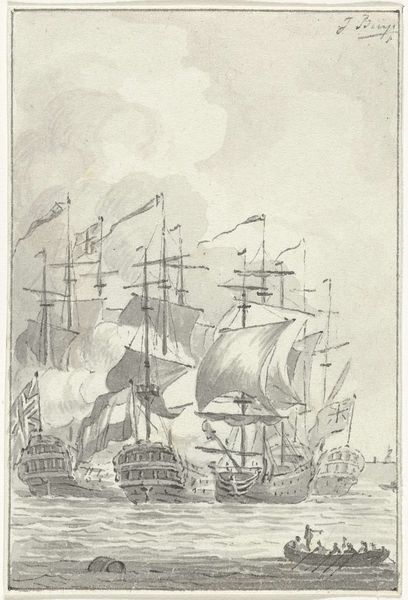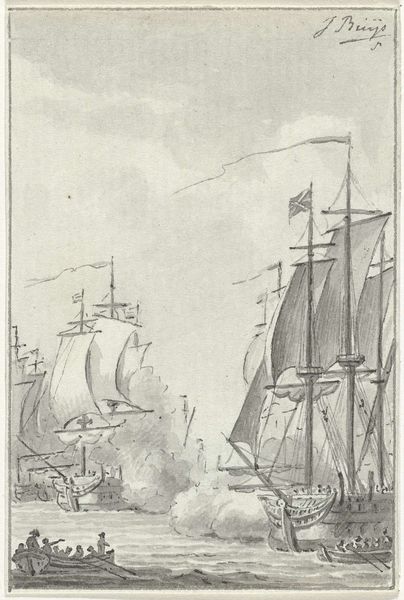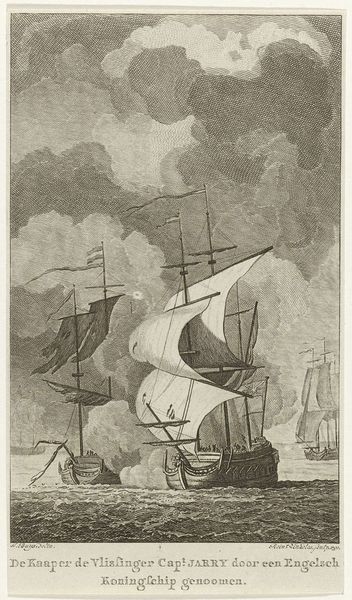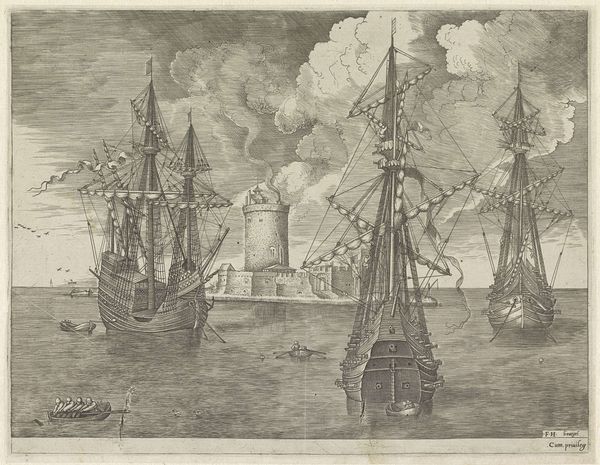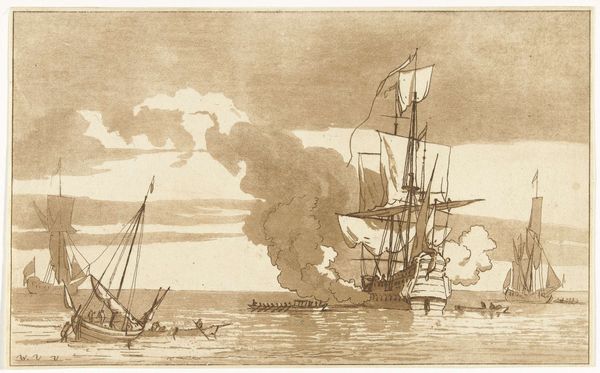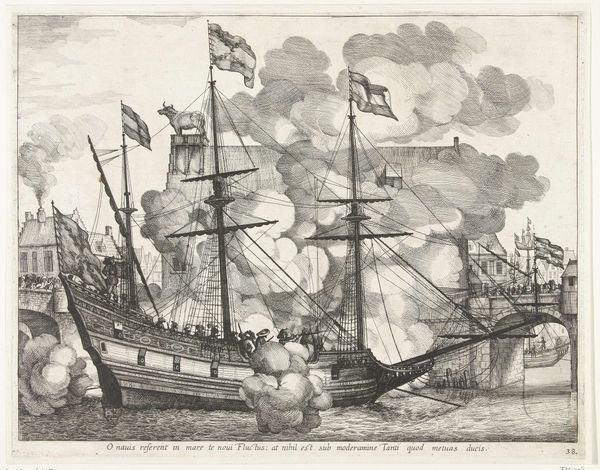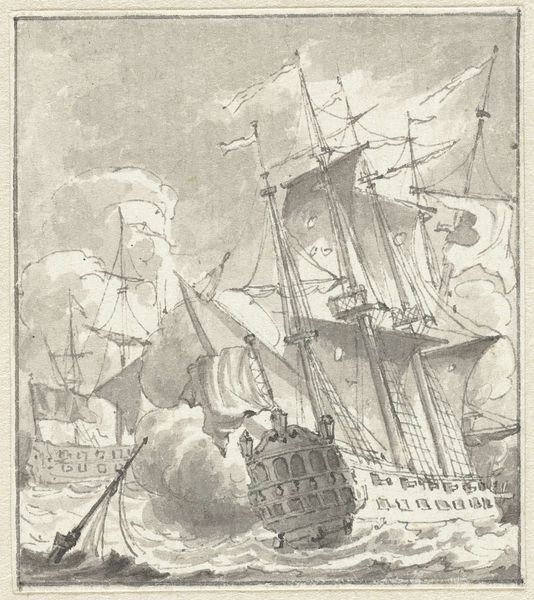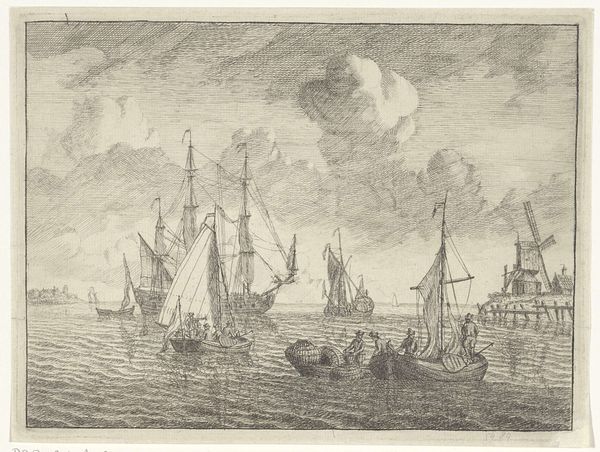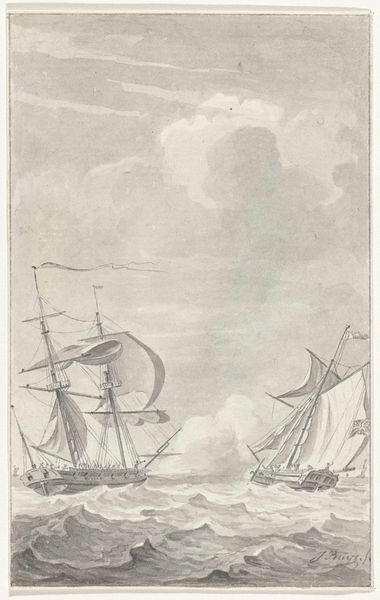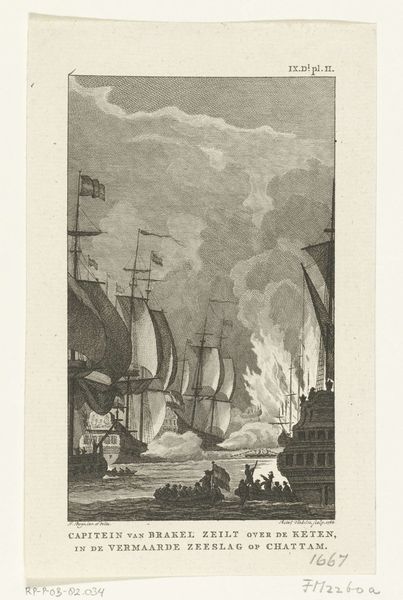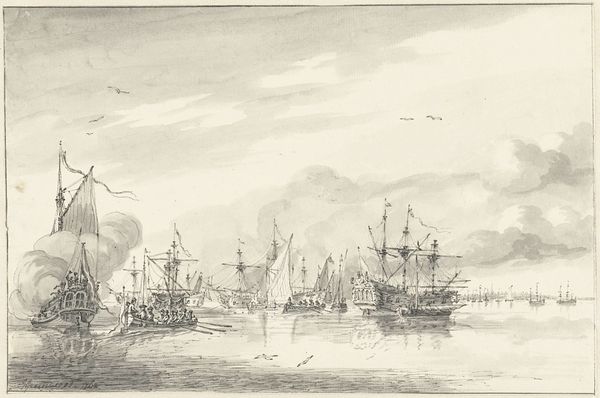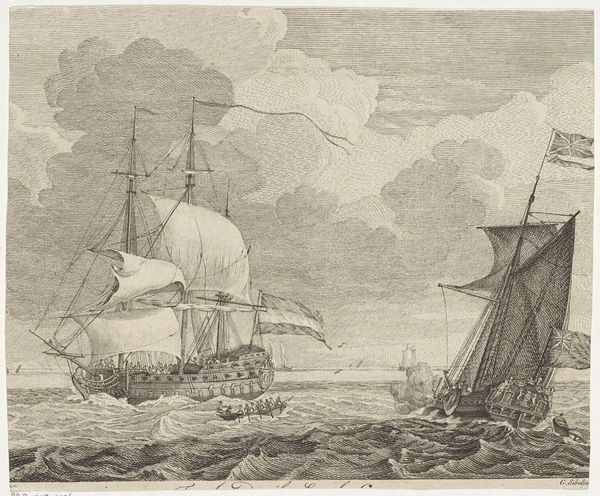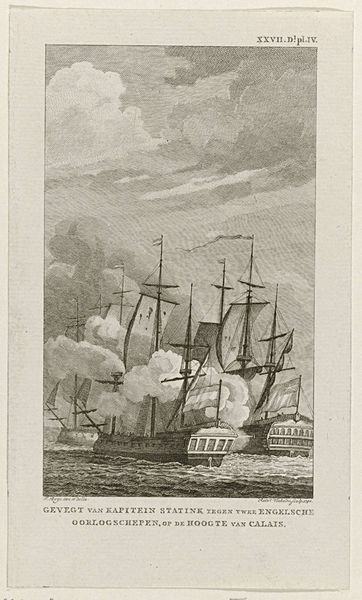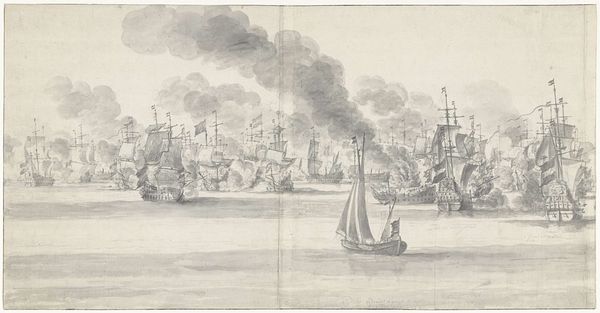
Dimensions: height 150 mm, width 89 mm
Copyright: Rijks Museum: Open Domain
Jacobus Buys rendered this drawing, "Het overvaren van de ketting in de Medway, 1667," using pen in gray ink and brush in gray wash. Note the prominent display of flags atop the ships, symbols that are not merely national emblems, but potent assertions of power and dominance. Flags have ancient roots, serving as rallying points in battle and declarations of territorial claim. We can trace their evolution from simple heraldic banners in medieval Europe to the complex, coded signals used in naval warfare. Consider the cultural memory embedded in these symbols. The act of displaying or capturing a flag carries profound psychological weight, signifying victory, conquest, and the subjugation of the defeated. This primal urge to assert dominance through symbolic representation taps into deep-seated instincts, reflecting a collective consciousness shaped by centuries of conflict and territorial struggle. The recurrence of flags throughout history speaks to our enduring need to define identity and exert influence in a world of shifting power dynamics. These flags, in their proud display, remind us of how symbols persist, evolve, and take on new resonance across time.
Comments
No comments
Be the first to comment and join the conversation on the ultimate creative platform.
